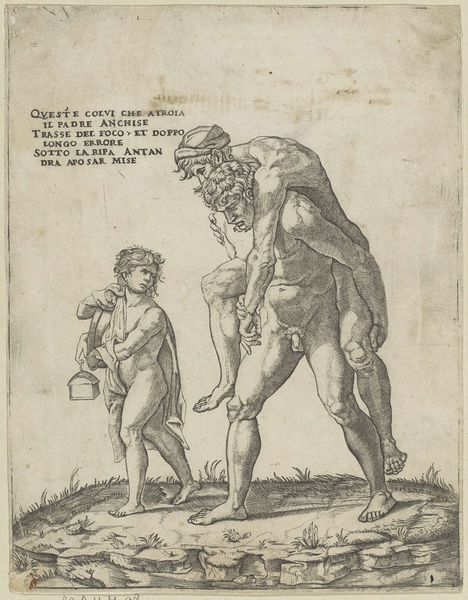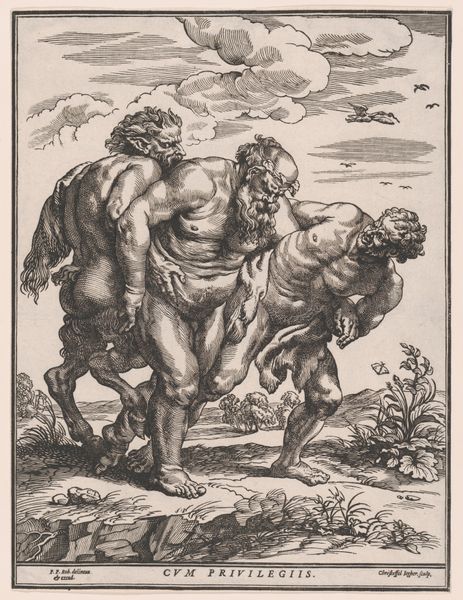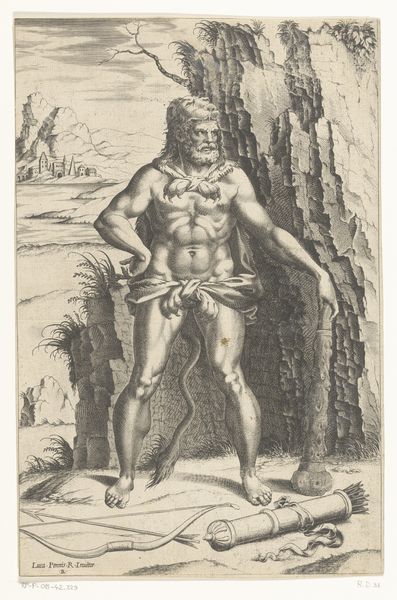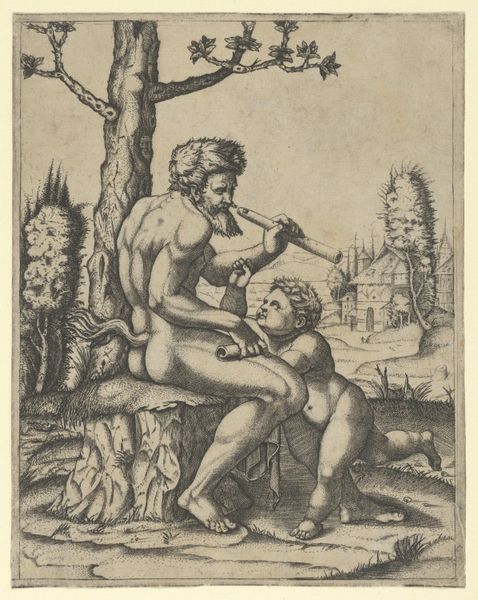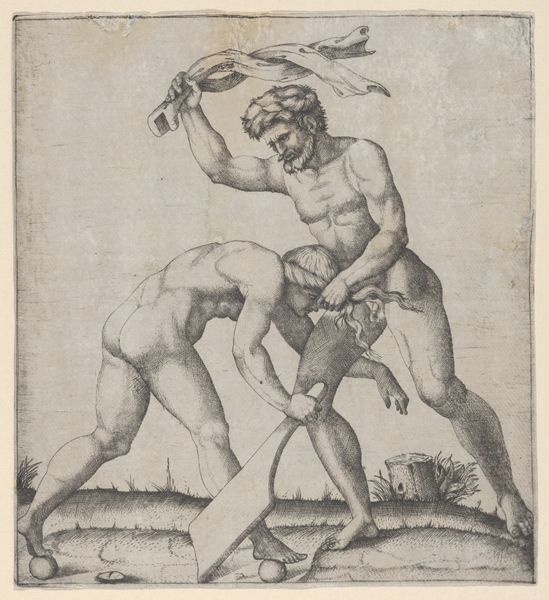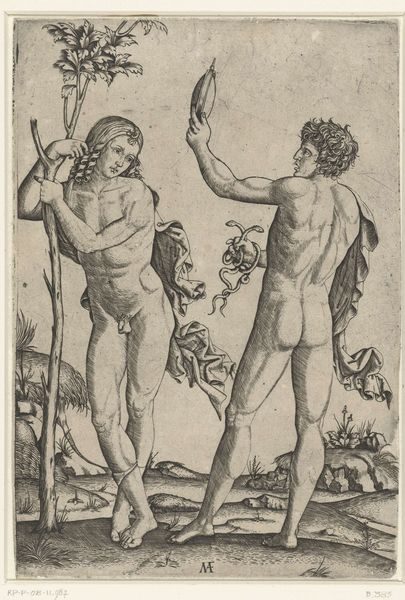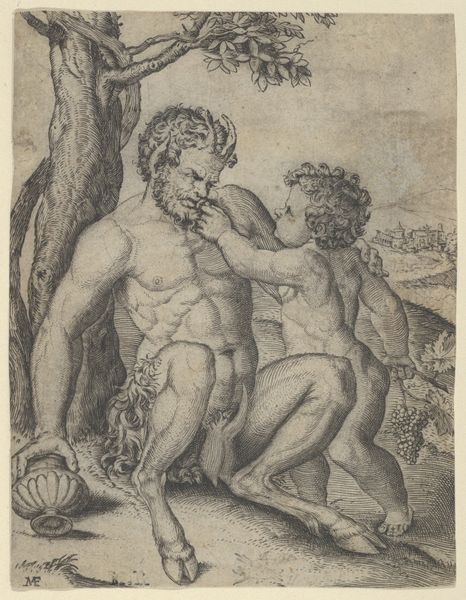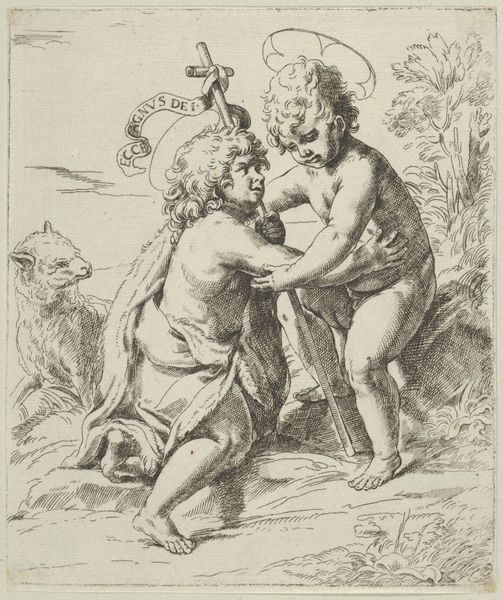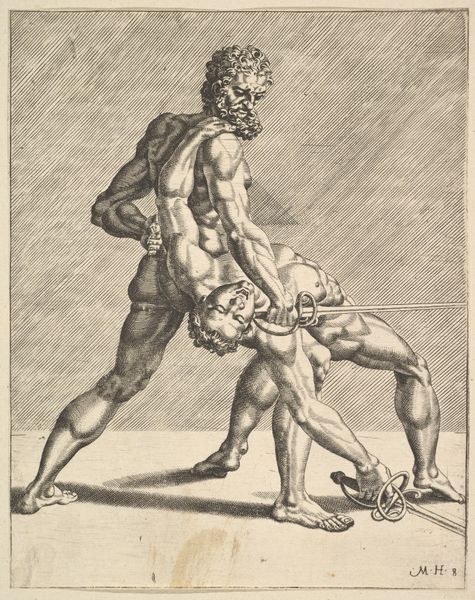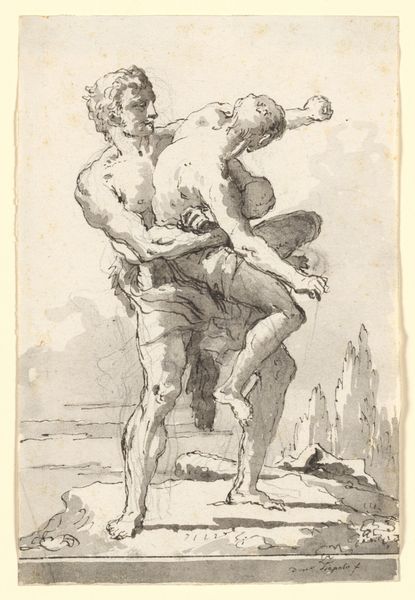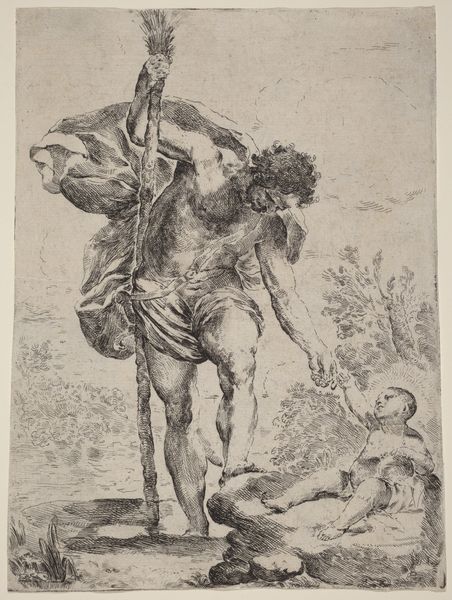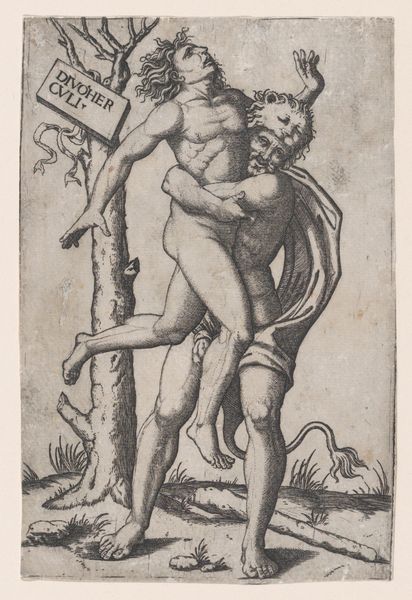
Aeneas rescuing Anchises, a young boy carrying a lantern at left 1520 - 1530
0:00
0:00
drawing, print, engraving
#
drawing
# print
#
figuration
#
history-painting
#
italian-renaissance
#
nude
#
engraving
Dimensions: Sheet (Trimmed to plate): 8 1/8 × 7 3/8 in. (20.7 × 18.8 cm)
Copyright: Public Domain
Curator: Here we have Giovanni Jacopo Caraglio's engraving, "Aeneas rescuing Anchises, a young boy carrying a lantern at left", created sometime between 1520 and 1530. Editor: Wow, it strikes me as quite heroic, almost strained. The light and shadow play really emphasize the muscles of Aeneas, burdened with his father on his back. He's a monument of duty, isn’t he? Curator: Precisely. Formally, observe the strategic use of line weight. Caraglio's technique demonstrates a sophisticated understanding of Renaissance aesthetic principles; note how he modulates line thickness to simulate depth and musculature. Consider also how the contrapposto pose conveys a sense of dynamic movement and tension. Editor: It’s definitely all about the bodies here! I feel that the story itself, of rescuing family from the flames, becomes secondary to a pure physical spectacle. The idealized physique almost overpowers the emotion of the scene. Even the kid with the lantern is a tiny, muscular cupid! Curator: Indeed, the emphasis on classical forms is undeniable. It's important to remember the historical context; engravings like these disseminated classical stories and ideals to a wider audience during the Renaissance. The artist employs techniques akin to mannerist sensibilities, enhancing dramatic effect via exaggerated anatomical display and spatial ambiguity. Look, for example, at the placement of Aeneas, nearly centered; that positioning compels immediate scrutiny and invites contemplation about heroism during times fraught by volatility. Editor: Maybe... I still can't shake the feeling that it is slightly detached, a sort of grand theatrical performance that focuses mainly on aesthetics rather than capturing an actual feeling. The figures seem frozen in time and idealized more than real. It reminds of something heroic made for athletic performance than personal struggle, maybe. Curator: Your interpretation aligns nicely with perspectives that emphasize the formal concerns over emotive representation—particularly how early Renaissance art frequently integrated classic themes! These stories provide vehicles through that both classical stories/wisdom circulate and virtuoso artist show skills that demonstrate their skills. In a simple analysis it appears all body shapes and compositional arrangement exist, as evidence this piece makes those notions clear. Editor: It’s interesting how we each key into certain elements—me, the visceral feeling, and you, the intricate structure that defines Caraglio's "Aeneas rescuing Anchises" in its historical place within art history... Thanks! Curator: A fruitful dialogue, wouldn't you agree? That each bring a way, where artwork becomes enriching and thought-provoking discussion ensues between viewer and ourselves also becomes deeper. Farewell now!
Comments
No comments
Be the first to comment and join the conversation on the ultimate creative platform.
